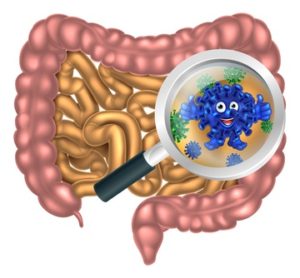Meditation Reduces Your Risk of Heart Death
 The National Heart, Lung, and Blood Institute (NHLBI) has reached a first-ever finding: patients with coronary heart disease who practiced meditation had a nearly 50 percent lower rate of heart attack, stroke, and death compared to a matched group that didn’t meditate. In addition to a dramatic reduction in the risk of death, heart attacks, and strokes in the TM group, the researchers found a clinically significant reduction in blood pressure. Mediation also reduced psychological stress in a subgroup of patients who were experiencing high levels of anxiety and other signs of stress.
The National Heart, Lung, and Blood Institute (NHLBI) has reached a first-ever finding: patients with coronary heart disease who practiced meditation had a nearly 50 percent lower rate of heart attack, stroke, and death compared to a matched group that didn’t meditate. In addition to a dramatic reduction in the risk of death, heart attacks, and strokes in the TM group, the researchers found a clinically significant reduction in blood pressure. Mediation also reduced psychological stress in a subgroup of patients who were experiencing high levels of anxiety and other signs of stress.
Meditation can generally be divided into two categories: concentration methods, which emphasize focusing on your breathing or a specific object; and mindfulness meditation, which usually uses chants, focused breathing, or repetitive thoughts. The goal in either case is to allow thoughts, feelings, and emotions to appear moment by moment without placing any attention on them. Simply let the thoughts enter. Acknowledge them and let them go, allowing yourself to tap into your inner self.
Conscious Breathing
In basic breathing exercises, all you need is a quiet place and a willingness to quiet the mind. Conscious breathing reduces stress and allows you to filter out the constant mind chatter. Quieting the mind offers the opportunity to get in touch with your inner self. A conscious breathing exercise can be done any time of day and as often as you wish. Use it as a powerful stress-busting tool when you are feeling overwhelmed:
Bring your attention to your breathing. Notice the flow of breath in and out of your lungs. Take a deep breath in through your nose, allowing the air to fill your lungs. Slowly exhale through your mouth. Observe the rhythm that naturally occurs. Acknowledge any distracting thoughts, and simply let them go when they appear. Return your attention to the rhythm of your breathing. Continue to take deep breaths in and out. When it feels natural, try allowing more time between each breath. Pause when appropriate, and feel the inner peace. Enjoy the freedom from mind chatter.
Meditation may be especially helpful for chronic pain. Other studies have shown the effectiveness of meditation for anxiety, substance abuse, skin ailments, and depression.
![]()
Vegetables May Delay Alzheimer’s Disease
 Researchers now report that a diet rich in polyphenols and polyunsaturated fatty acids could have a significant effect combating the cognitive function decline during both aging and neurodegenerative diseases such as Alzheimer’s disease.
Researchers now report that a diet rich in polyphenols and polyunsaturated fatty acids could have a significant effect combating the cognitive function decline during both aging and neurodegenerative diseases such as Alzheimer’s disease.
Grapes, cocoa, olive oil, and nuts are rich in polyphenols, a type of antioxidant, and oily fish and vegetables such as corn and soybeans are high in polyunsaturated fatty acids. Researchers have observed that mice fed a polyphenol and fatty-acid enriched diet had a significantly higher amount of stem cells, as well as new differentiated cells, in the olfactory bulb and hippocampus regions of the brain, both of which are damaged in patients with Alzheimer’s Disease. Further, the team noted that the diet diminished oxidative damage in the hippocampal and cortical cells of the brain.
![]()
“Life is no brief candle to me. It is a sort of splendid torch which I have got hold of for the moment, and I want to make it burn as brightly as I can before handing it on to future generations.” -George Bernard Shaw
![]()
Late Night Meals May Be The Cause of Weight Gain
When you eat may be just as important to your health as what you eat, found researchers at the Salk Institute for Biological Studies. Their experiments in mice revealed that the daily waxing and waning of thousands of genes in the liver – the body’s metabolic clearinghouse – is mostly controlled by food intake and not by the body’s circadian clock as conventional wisdom had it.
 If feeding time determines the activity of a large number of genes completely independent of the circadian clock, when you eat and fast each day will have a huge impact on your metabolism,” says the study’s leader, Satchidananda (Satchin) Panda, Ph.D., an assistant professor in the Regulatory Biology Laboratory.
If feeding time determines the activity of a large number of genes completely independent of the circadian clock, when you eat and fast each day will have a huge impact on your metabolism,” says the study’s leader, Satchidananda (Satchin) Panda, Ph.D., an assistant professor in the Regulatory Biology Laboratory.
The researchers’ findings, could explain why shift workers are unusually prone to metabolic syndrome, diabetes, high cholesterol levels, and obesity. “We believe that it is not shift work per se that wreaks havoc with the body’s metabolism but changing shifts and weekends, when workers switch back to a regular day-night cycle,” says Panda.
Panda, for one, has stopped eating between 8 pm and 8 am and says he feels great. “I even lost weight, although I eat whatever I want during the day,” he says.
![]()
Yeast Overgrowth Syndrome
An overgrowth of the usually benign Candida albicans in the gastrointestinal tract is now recognized as a complex medical syndrome called chronic candidiasis, or yeast overgrowth syndrome.
What is Candidiasis?
Candida albicans is a yeast that can be found living in the intestinal tracts of most individuals. Yeasts cohabitate there in a symbiotic relationship with over 400 healthy bacteria. These bacteria help with digestion and absorption of certain nutrients, and they keep the yeasts in check. When these good bacteria die or are suppressed, the yeasts are allowed to grow to unhealthy levels, causing candidiasis.
Signs and Symptoms
 Candidiasis commonly infects the ears, nose, and the urinary and intestinal tracts. Typical symptoms are constipation, diarrhea, irritable bowel, abdominal pain, bloating, gas, indigestion, rash, bladder spasms and infection, and ear and sinus infections.
Candidiasis commonly infects the ears, nose, and the urinary and intestinal tracts. Typical symptoms are constipation, diarrhea, irritable bowel, abdominal pain, bloating, gas, indigestion, rash, bladder spasms and infection, and ear and sinus infections.
Yeast overgrowth is similar to allergies in that there are a plethora of symptoms. This can lead to skepticism in many doctors as the symptoms are tough to define. It’s not uncommon for yeast overgrowth to cause or contribute to such complex conditions as depression, asthma, fatigue, mental confusion, weakened immunity, allergies, chemical sensitivities, hyperactivity, chronic ear and sinus infections, and adrenal fatigue.
Like most opportunistic infections, candida and other yeasts may increase during times of stress. This overgrowth leaks toxins into the bloodstream or other tissues, allowing antigens (foreign invaders) to set up residence in various bodily tissues. Antigens then trigger complex allergic reactions. (This might explain why most individuals with chronic yeast overgrowth develop food, inhalant, and environmental allergies.) Allergic reactions can manifest in a variety of symptoms: fatigue, brain fog, depression, joint and muscle pain, digestive disorders, headache, rash, and breathing problems. Inflammation of the nose, throat, ears, bladder, and intestinal tract can lead to infections of the sinus, respiratory, ear, bladder, and intestinal membranes. In an attempt to arrest these infections, your physician might prescribe a broad-spectrum antibiotic. Such antibiotics promote yeast overgrowth and oftentimes additional symptoms.
Causes
The most common cause of candidiasis is medication overuse, especially of antibiotics but also of birth control pills and corticosteroids. These can suppress the immune system and the good intestinal bacteria. When used appropriately, antibiotics and corticosteroids save lives, but if you are taking these medications, check with your doctor about possible alternatives.
A minor increase in intestinal yeast is usually not a problem, leading possibly to infection of the mouth (thrush) or vaginal lining (vaginitis or ‘yeast infection’). The body’s immune defenses are usually strong enough to keep the yeast from taking over the intestinal tract.
However, if yeast overgrowth is left unchallenged, more sinister symptoms appear. Yeasts can change into an invasive mycellial fungus with rhizoids (tentacle-like projections) that penetrate the lining of the intestinal tract. These projections can cause intestinal permeability and leak toxins across the cellular membranes. Penetration by these rhizoids and the resulting intestinal permeability cause a disruption in the absorption of nutrients and finally nutritional deficiencies. Deficient nutrients lead to reduced immunity and further weakening of the body’s defense systems. This can lead to fatigue, allergies, decreased immunity, chemical sensitivities, depression, poor memory, and digestive complaints.
![]()
Control Yeast Through Diet

The Candida Diet eliminates yeast-nourishing foods. A number of dietary factors appear to promote the overgrowth of candida. Try eliminating all the foods below for three months:
- Sugar is the chief nutrient for Candida albicans, so restricted sugar intake is absolutely necessary to effectively treat chronic candidiasis. Avoid refined sugar, honey, maple syrup, fruit juice, milk, white potatoes, corn, processed or bleached (white) flour, bakery goods, muffins, cereals, and anything containing sugar. Ice cream, cake, cookies, and other sweets should be avoided for at least three months.
- Fruits should also be avoided, along with fruit juice (except any fruit juice taken with 5-HTP). After the initial two weeks, try introducing apples and pears to see if you have any reactions. (Reactions might include fatigue, depression, aches and pain, rectal itching, itching of the ears or nose, and digestive disturbances.) If not, then try berries: strawberries, blueberries, blackberries, and raspberries. Avoid all other fruits.
- Alcoholic beverages should be avoided, as should malted-milk or other malted products.
- Mold- and yeast-containing foods are best avoided for two to three months. These include peanuts, dried fruits (including prunes, raisins, and dates), vinegar, pickled vegetables, sauerkraut, relishes, green olives, vinegar-containing salad dressings, ketchup, mayonnaise, and pickles.
- Milk should be avoided for at least three months, since it is a simple carbohydrate. Dairy products other than milk present increased yeast problems for some people. Still, every person is different, and some are able to be more liberal with their diet. Try these other dairy products and see if you have any problems.
- For stubborn cases of yeast overgrowth I recommend taking a good probiotic and the Yeast Formula to crowd down and then kill the unhealthy yeast. Here is the Yeast Formula my patients use https://essentialtherastore.com/collections/probiotics-gi-health/products/yeast-formula?variant=6919846395956
![]()
Replace Good Bacteria

Bacteria such as Lactobacillus acidophilus, L. bulgaricus, L. catnaforme, L. fermentum, and Bifidobacterium bifidum normally inhabit vaginal and gastrointestinal tracts; help digest, absorb, and produce certain nutrients; and keep potentially harmful bacteria and yeast in check. Use probiotics to replace these bacteria when taking antibiotics, but not at exactly the same time of day.
L. acidophilus has proven to be effective in treating irritable bowel syndrome, H. pylori, diarrhea, and colitis. And it’s especially helpful in treating yeast overgrowth.
Yogurt contains certain strains of good bacteria, but it isn’t standardized for a particular amount. Also, most yogurts are made from L. bulgaricus or Streptococcus thermophiles.
Both are friendly bacteria, but neither will help colonize the colon. So it’s best to use live organisms that are shipped on ice and then kept refrigerated until purchase. Live L. acidophilus and B. bifidum enteric-coated capsules are best.
Supplement with probiotics for three months:
- 5-25 billion organisms daily, or take up to 20 billion if taking antibiotics. Some extremely resistant yeast infections may need continuous probiotic replacement therapy.
- I recommend my patients with yeast overgrowth take my Yeast Formula and enteric- coated high-dose probiotics.